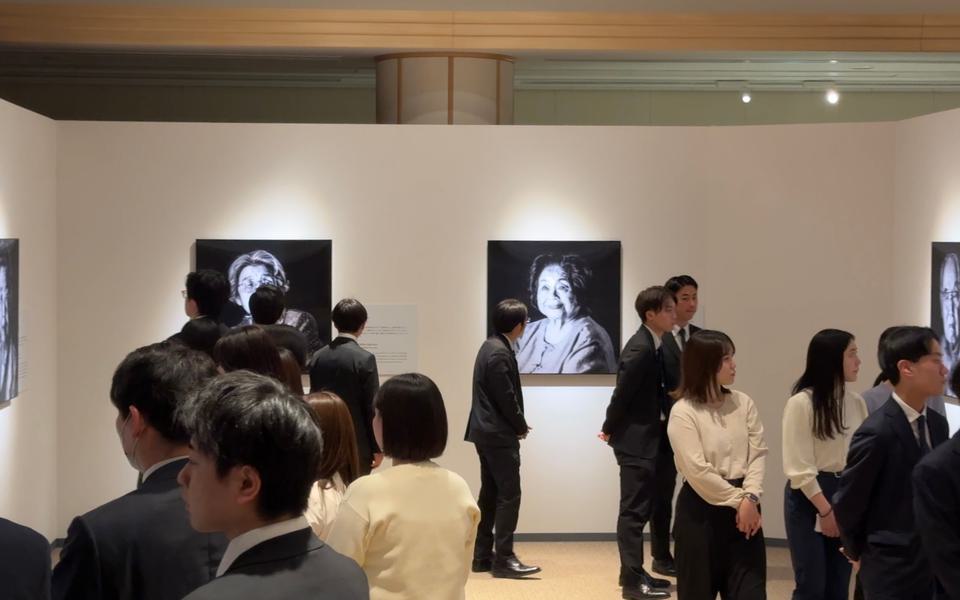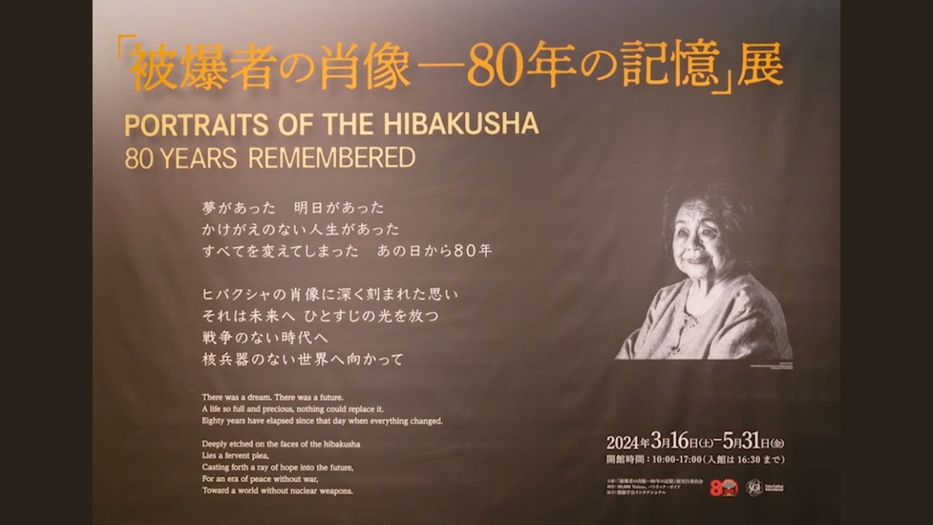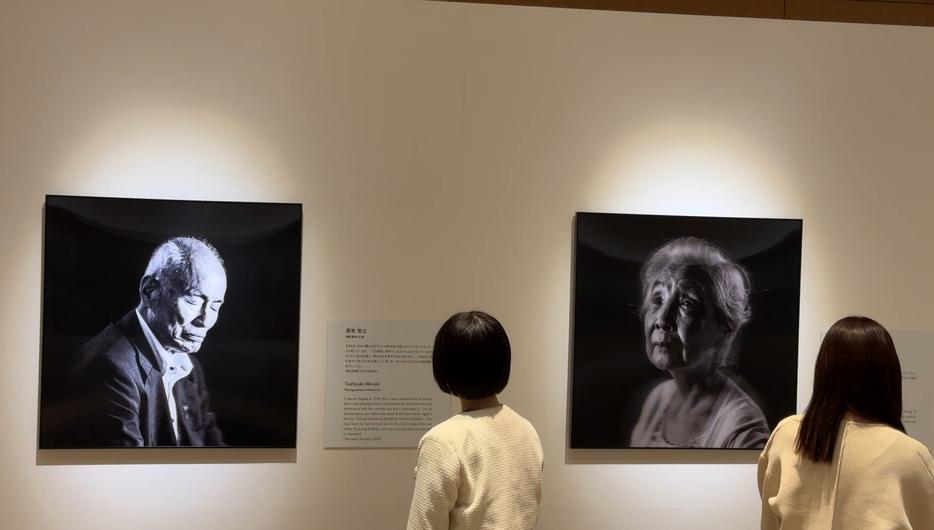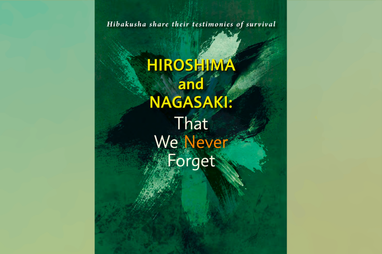

Watch a short exhibition overview
The inaugural showing of the exhibition “Portraits of the Hibakusha—80 Years Remembered” in Japan was held at the Soka Bunka Center in Tokyo, from 16 March to 31 May 2024. The exhibition attracted about 20,000 viewers from around the world, demonstrating the universal impact of its message.
The exhibition was created by 80,000 Voices, a UK-based organization, and renowned photographer Patrick Boyd, and it was supported by Soka Gakkai International (SGI). This initiative was born out of a heartfelt commitment to share the poignant stories of the hibakusha through the compelling medium of art, reaching as broad an audience as possible.
The hibakusha persist with the earnest desire of imparting their experiences as indelible lessons for present and future generations around the world to heed, praying that this tragedy will never again be repeated.
Nearly 80 years have passed since August 1945, when the atomic bombs were dropped onto the cities of Hiroshima and Nagasaki. Over the decades, the hibakusha have endured unspeakable suffering—from countless deaths and injuries caused by the bombs’ intense heat wave, blast winds and radiation, to lifelong aftereffects including societal discrimination and prejudice. Yet, amidst these hardships, their resolve has not waned. The hibakusha persist with the earnest desire of imparting their experiences as indelible lessons for present and future generations around the world to heed, praying that this tragedy will never again be repeated.
The exhibition employs a specialized lenticular technology to create evocative black and white portraits of 52 hibakusha from Hiroshima and Nagasaki. These portraits are coupled with personal reflections by each individual, displayed in Japanese and English. The stark contrasts of light and dark captured across their faces reveal the depth of the survivors’ heartfelt emotions and experiences.

Visitors viewing the exhibition in Tokyo.
Messages from Hibakusha
Terumi Kuramori was just one year old when the atomic bomb was dropped on Nagasaki and has no direct memory of that day. Her parents did not speak out about the fact that they survived the bombing because, at the time, there was so much discrimination and prejudice against the hibakusha. Terumi’s message is: “There was a lot of fear around marrying a hibakusha, real discrimination. Sometimes survivors were shunned just because they had experienced the atomic bombing, even if radiation sickness is not contagious.”
Masanori Shinagawa was exposed to the radiation at about 30 km from the detonation point in Hiroshima when he was four years old. It was only in 2023 that he received a “genbaku techo,” or Atomic Bomb Survivor’s Certificate, an official document issued by the Japanese government. Masanori’s message is: “It is a pity that leaders still think you can fight wars for the sake of peace and that nuclear weapons are necessary—that they don’t value dialogue and see that the lives of others are as important as their own.”
Visitor Reflections
The exhibition elicited powerful emotional responses from its audience. Here are some of the poignant reflections shared by visitors:
“One of the messages that said, ‘The opposite of peace is not war but indifference to war’ resonates with me.”
“The portraits of each person were so powerful that I could not hold back my tears at the poignant eyes and messages from the hibakusha who have lived through these tragedies for almost 80 years.”
“All of them hope for a world without nuclear weapons, and they continue to preserve their peaceful spirit while sacrificing their own lives for the sake of future generations. I have decided once again that I will be one of those who will take up their voices and continue to take steady action from where I am now.”
In the future, the exhibition will be shown in other venues across Japan, aiming to reach a wider audience. It is hoped that those who witness these portraits will grasp the deep anguish and indignation of the hibakusha regarding the atrocities caused by nuclear weapons. This exhibition amplifies their voices and aims to inspire a collective commitment to a world free from nuclear weapons.


